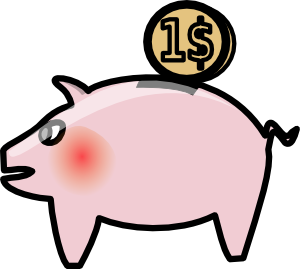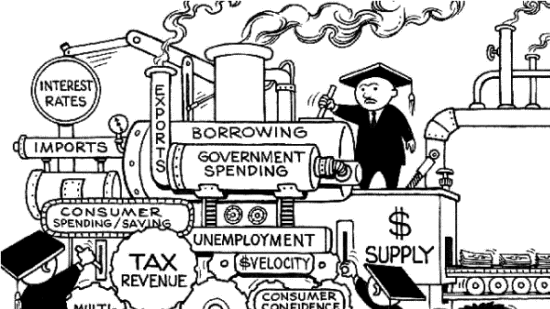Consumption & Saving
Disposable Income:
• Income after taxes or net income
• DI= Gross income - taxes
2 choices
With disposable income, households can either:
- consume (spend monet on goods and services)
- save (not spend money on goods and service)
Consumption:
• Household spending
• The ability to consume is contained by:
- the amount of disposable income
- the propensity to save
•Do households consume if DI=0?
- autonomous consumption
- dissaving
Saving
• Household NOT spending
• the ability to save is constrained by
- the amount of disposable income
- the propensity to consume
APC + APS
APC: the average propensity to consume
APS: the average propensity to save
APC + APS = 1
1 - APC = APS
1- APs = APC
* if negative, or >1 then enter world of dissaving*
MPC & MPS
MPC
Marginal Propensity to Consume
• the fraction of any change in disposable income that is consumed
• MPC= change in consumption / change in disposable income
MPS
Marginal Propensity to Save
• fraction of any change in disposable income that is saved
• MPS = Change in savings / change in disposable income
Marginal Propensities
MPC + MPS = 1
MPC = 1 - MPS
MPS = 1- MPC
* remember, people do two things with their disposable income, they either consume or save it *
Spending Multiplies Effect:
• initial change in spending ( C, Ig, G, Xn) causes a lawyer change in aggregate spending or demand
• Multiplier = change in AD/ change in Spending
Calculating Spending Multiplier
• can be calculated from MPS or MPC
• Multipiers = 1/ 1- MPC or 1/MPS
• multipliers are (+) when there is an increase in spending and (-) when there's a decrease
Calculating Tax Multiplier
• when government taxes, the multiplier works in reverse
Why?
because new money is leaving circular flow
•Tax multiplier (note: it's negative)
-MPC/ 1 - MPC or -MPC/MPS
• if there's a tax cut, then the multiplier is positive, because there is now more money in circular flow
Fiscal Policy
What is Fiscal Policy?
• change in the expenditures or tax revenues of the federal government
• 2 tools of fiscal policy:
- taxes: government can increase or decrease taxes
- spending: government can increase or decrease spending
Deficit, Surpluses, Debt
• Balance budget
revenues = expenditure
• Budget deficit
revenues < expenditures
• Budget surplus
revenues > expenditure
• Government Debt
sum of all deficit - sum of all surpluses
•government must borrow money when it runs a budget deficit
- government borrows from
Individuals Corporation
Financial Institution Foreign government
Fiscal Policy two options:
1) Discretionary Fiscal Policy (action)
• expenditures fiscal policy - think deficit
• contractionary fiscal policy - think surplus
2) Non-Discretionary Fiscal Policy (no action)
Discretionary v. Automatic Policies
Discretionary :
- increasing or decreasing government spending without taxes in order to return the economy to full employment
- involves policy makers doing fiscal policy in response to an economic problem
Automatic :
- Unemployment compensation and marginal tax rates are examples of automatic polls that help mitigate the effects of recession and inflation
- takes place without policy makers having to respond to current economic problem
Expansionary v. Contractionary
Expansionary:
- combat a recession
- Gov. spending increases, taxes decreases
Contractionary:
- Combat inflation
- Gov. spending decreases, taxes increases
Automatic/Built-in Stabilizers
• anything that increases the government's budget deficit during a reckon and increases its budget surplus during inflation without requiring explicit action by poly maker
• economic importance:
- Taxes reduce spending and aggregate demand
- reductions in spending are desirable when the economy is moving toward inflation
- increases in spending are desirable when the economy is heading toward recession
Tax:
• Progressive Tax System
- average tax rate (tax revenues/GDP) rises with GDP
•Proportional Tax System
- average tax rate remains control as GDP changes
•Regressive Tax System
- Average tax rate falls with GDP




No comments:
Post a Comment